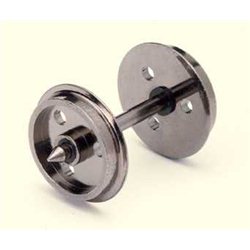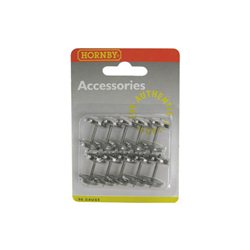There are tens of thousands of decals available covering a multitude of different models from trains, planes and...
No products
Product successfully added to your shopping cart
There are 0 items in your cart. There is 1 item in your cart.
Search Tips
What are the parts of a train wheel called?
Train wheels are probably one of the most important components of a railway locomotive, coach or wagon. Their shape and design are key to providing safe, reliable, stable and speedy operations and a typical train wheel has many features and design aspects to help it achieve this.
The main features of a train's wheel are the flange, tread, rim, web/spokes and the hub.
Train wheels differ greatly depending on their type and intended purpose, but all will have a flange to keep it on the rails (should it not remain naturally centred), tread (which is the part of the rim that sits on the track and is specially shaped to keep the train running true on the rails), a hub in the middle to mount it to an axel and a centre mass that connects the outer rim to the central hub, this could be an integral web or spokes depending on the wheel's type, some modern trains even have their brake discs mounted on the outer surface of the wheel.
Click here to receive the tips weekly in your mailbox. You can unsubscribe at any time.










